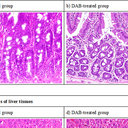Fluid mechanical and physicochemical modeling interprets hypertension to be capable of inducing secondary complications.
Mots clés
Abstrait
The relationship of hypertensives and many pathological syndromes still remains unclear. A mathematical model in terms of the fluid mechanics and physicochemical analyses is established to correlate the plasma viscosity, the shear stress and the rate of shear in blood stream with the ligand-receptor dissociation constant. This model has arrived at the conclusive results that high viscosity, high rate of shear created in the blood streams, and the peripheral resistance may act as important preceding factors to induce a serial subsequent pathological clinical manifestations. High viscosity may interfere with the ligand-receptor combination, in contrast, high rate of shear may knock the ligand (s) off the existing ligand-receptor complex, while elevation of peripheral resistance may slow down the blood flow rate, resulting in a diminished dissociation of ligand-receptor complex. This model has successfully interpreted the possible cause of some post-hypertensive abnormal outcome manifestations involving obstructive and degenerative stenosis (such as renal artery stenosis), growth retardation, blood vessel detriment, coarctation of aorta, coronary thrombotics, atherosclerosis, hyperinsulinemia, diabetes, obesity, hypothyroidism, infertility, and at the worst, carcinoma, etc.



